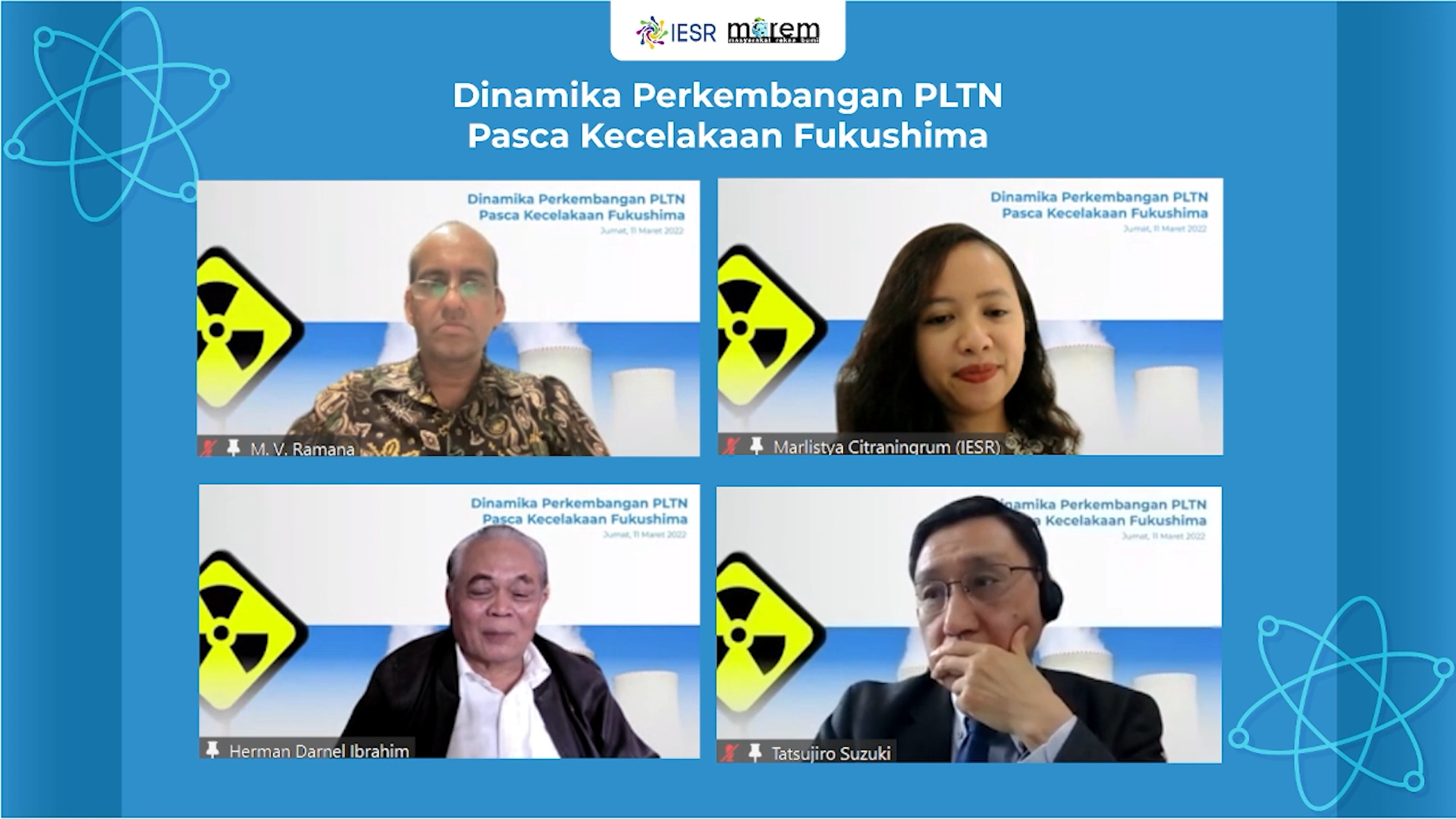Jakarta, March 11, 2022 – On March 11, 2011 an earthquake measuring 8.9 on the Richter Scale rocked Tohoku. The nuclear reactor automatically stops operating and is replaced by a diesel generator to cool the core reactor. However, the 14-meter high tsunami that came later stopped the diesel generator and flooded the nuclear power plant. As a result 3 nuclear nuclei melt and release radioactive material. The Fukushima disaster is categorized as a level 7 nuclear disaster (the highest level made by the International Nuclear Agency), and the largest since the 1986 Chernobyl disaster.
Even though 11 years have passed since the nuclear reactor accident at Fukushima, the impact is still being felt by Japanese people. In addition, this incident affected a Japanese energy system which at that time was heavily dependent on nuclear plants and the development of nuclear energy around the world.
Since the tragic incident, the world’s nuclear generating capacity has continued to decline, and countries have reviewed their long-term energy plans. Germany, for example, decided to phase-out nuclear power plants; the last 3 nuclear power plants will be retired at the end of 2022. Several other countries are also planning to phase out nuclear power plants in 2025 – 2030. The World Nuclear Industry Status Report 2021 noted that Japan had temporarily suspended the use of nuclear plants and even reached 0 in 2013 and 2014. In 2015, the Government of Japan began operating its nuclear plants again, and currently 10 nuclear power plants are operating and supplying 3.9% of Japan’s energy mix.
Tatsujiro Suzuki, Professor and Vice Director of the Research Center for Nuclear Weapon abolition at Nagasaki University (RECNA), in a webinar entitled “The Dynamics of Development of Nuclear Power Plants After the Fukushima Accident” which was held Friday, March 11, 2022, said that the impact of the Fukushima accident had not been completed until today. A number of areas in Fukushima are still closed, although the area affected is reduced. Contamination of water and agricultural products is still happening today.
“From the operational point of view of the nuclear plants that are currently running, there are additional costs to ensure the operational safety of each plant,” explained Suzuki.
JCER (Japan Center for Economic Research) estimates the need for recovery after the Fukushima accident to reach 322 – 719 trillion USD. This figure is higher than the Japanese government’s estimate of 74.3 – 223.1 trillion USD. The government’s calculation is lower because the cost of final disposal of waste is not included in the calculation.
The Japanese public’s perception of nuclear power plants also changed direction after the Fukushima accident. More than half of the Japanese population (56.4%) stated that nuclear power plants should be discontinued and closed immediately.
Member of the National Energy Council, Herman Darnel Ibrahim, highlighted the increasing investment costs of nuclear power plants, and their high security risks.
“The LCOE of nuclear power is considered high at 8-12 cents USD according to the world nuclear agency, even reaching 12-16 cents USD according to Schneider. The existence of a nuclear power plant also creates a feeling of insecurity for the surrounding population,” explained Herman.
Nuclear power plants (PLTN) are discoursed as one of Indonesia’s strategies to achieve net-zero emissions by 2060 or sooner. With the massive utilization of renewable energy (75% of renewable energy variables are included in the electricity grid), the development of energy storage systems to reduce the cost of developing renewable energy will make the downward trend of LCOE (Levelized Cost of Energy) for solar and wind energy with batteries thus make it more economical than the cost of building a nuclear power plant.
M.V Ramana, Professor and Director of the Liu Institute for Global Issues of British Columbia University, agrees that nuclear power plants carry major risks. Currently, there are no nuclear plants with ‘zero risk accident’, even the SMR (Small Modular Reactor) technology which is considered safe, still has the potential for accidents.
“Technically, there is no universal design for various places and geographical situations for the construction of nuclear power plants. The risk of accidents, and radioactive waste requires a system that is designed contextually with the local location and situation. This requires an in-depth study,” explained Ramana.
Ramana alluded to the growing perception of nuclear power as a solution to the problem of climate change because it can produce energy with low emissions. According to him, the cost of building a nuclear power plant is higher than currently available technologies, such as solar or wind power plants, which are safer and more affordable.
Ramana explained that statistically, the number of nuclear plants in the world continues to decrease. One of them is because nuclear power is no longer economical. The peak of the development of nuclear power plants was more than 3 decades ago, after that the number of power plants built continued to decline.
“In the future, even in the most optimistic scenario, nuclear plants will only contribute 10% to the global energy mix,” Ramana explained.

